

Atmosia
Craft Cinematic Atmospheres from a Single Note
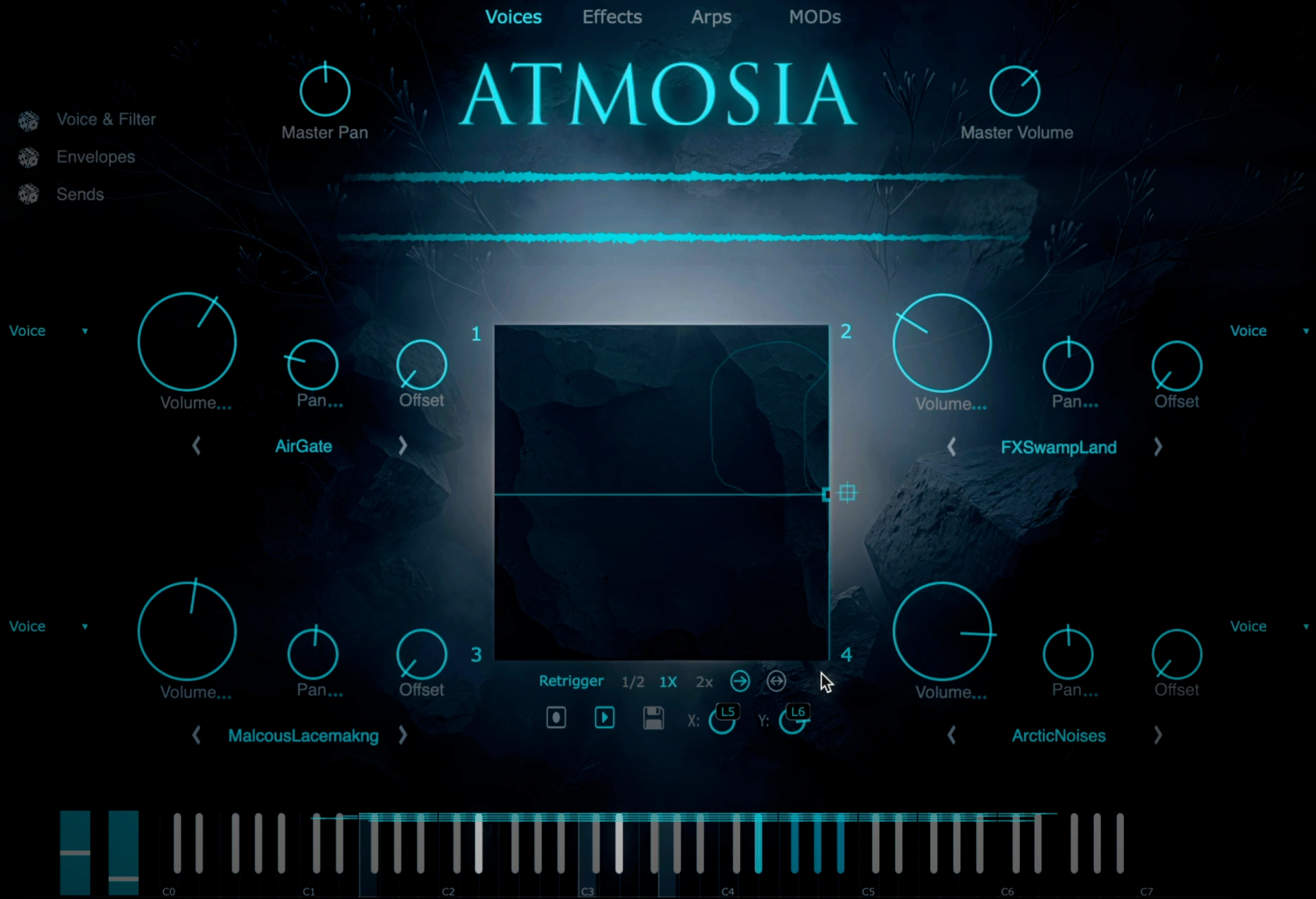
Atmosia Comes of Age
Discover a new realm of cinematic expression where every note feels alive. Atmosia 3 unfolds textures that are at once fragile and fractured, richly saturated yet crystal-pure, then drifts into ambient calm before plunging into unsettling, haunting terrain.
From film scores to game soundtracks, Atmosia 3 is your four-voice atmospheric engine—perfectly tailored for film, TV, advertising, video games, ambient and experimental genres.
A complete code-base overhaul meets an expansive library of over 700 sound sources, all honed to push you toward the ethereal end of the spectrum. Whether you're crafting soaring underscored moments or immersive sound beds, Atmosia 3 simplifies complex atmospherics into single-note magic.
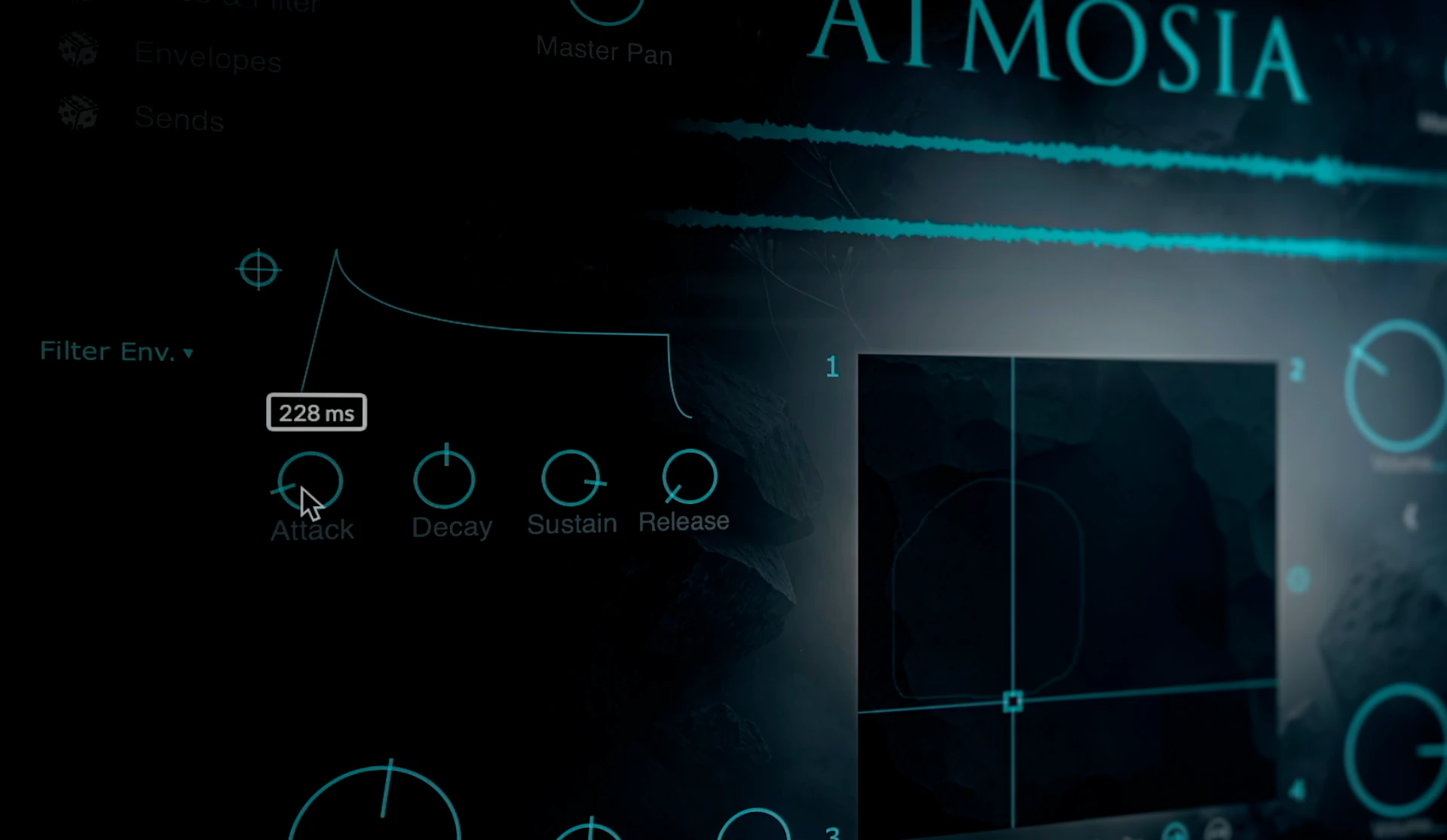
Refreshed and Revised
During a full-codebase overhaul, Atmosia emerged with a fresh, minimalist interface. Every voice-editing tool now lives on a single, streamlined front page—no more menu diving or hidden panels. You get instant access to envelopes, filters, modulation, and effects exactly where you need them.
Underneath its polished surface, Atmosia's signature deep per-voice control has been expanded even further. Sculpt each sound source with full ADSR envelopes, dedicated filter envelopes, tremolo (volume) and vibrato (pitch) modulation, field effects, flexible send routing, and customizable pitch-bend ranges. Plus, keyboard splitting lets you assign distinct note ranges to individual voices for dynamic layering and performance.
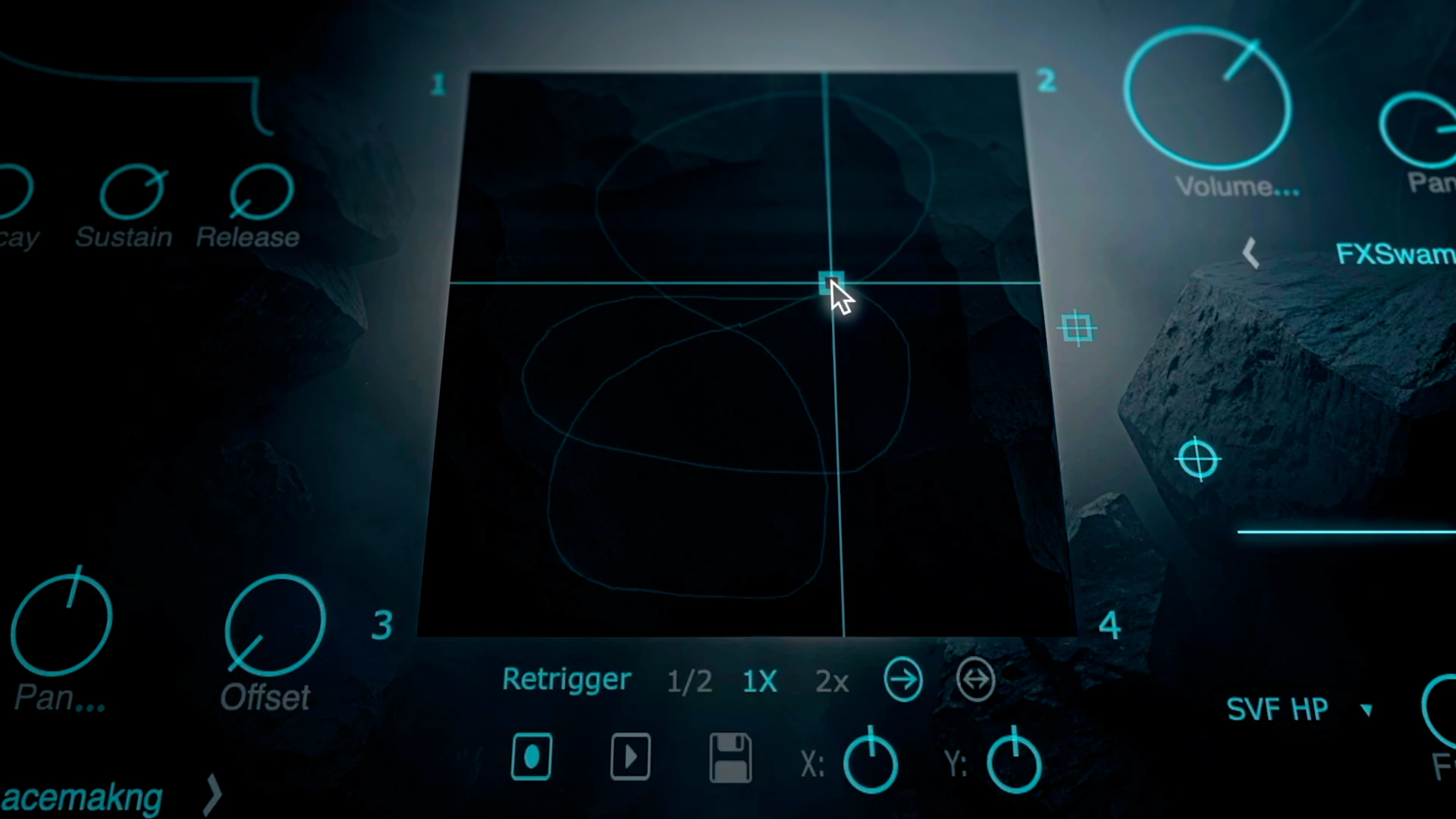
The Path to XY Mastery
Atmosia's iconic X/Y pad invites you to seamlessly morph between four distinct sound sources. Draw dynamic movement paths in real time, record them with a single click, and see every contour visualized directly on the pad for instant playback and refinement.
This update introduces dedicated horizontal and vertical offset controls, so you can shift your recorded path anywhere across the X/Y plane—and, just like every other parameter in Atmosia, these offsets are fully modulatable for endlessly evolving textures.
We've replaced the old static timer with a purpose-built Transit Modulator (LFO) that syncs perfectly to your DAW's tempo. Choose any musical interval—eight bars, two bars, a half-bar—and craft how your path unfolds using classic waveforms (sine, triangle), random positioning, or even your own custom LFO shape. Retrigger or run one-shot, ping-pong or free-run—the choice is yours.
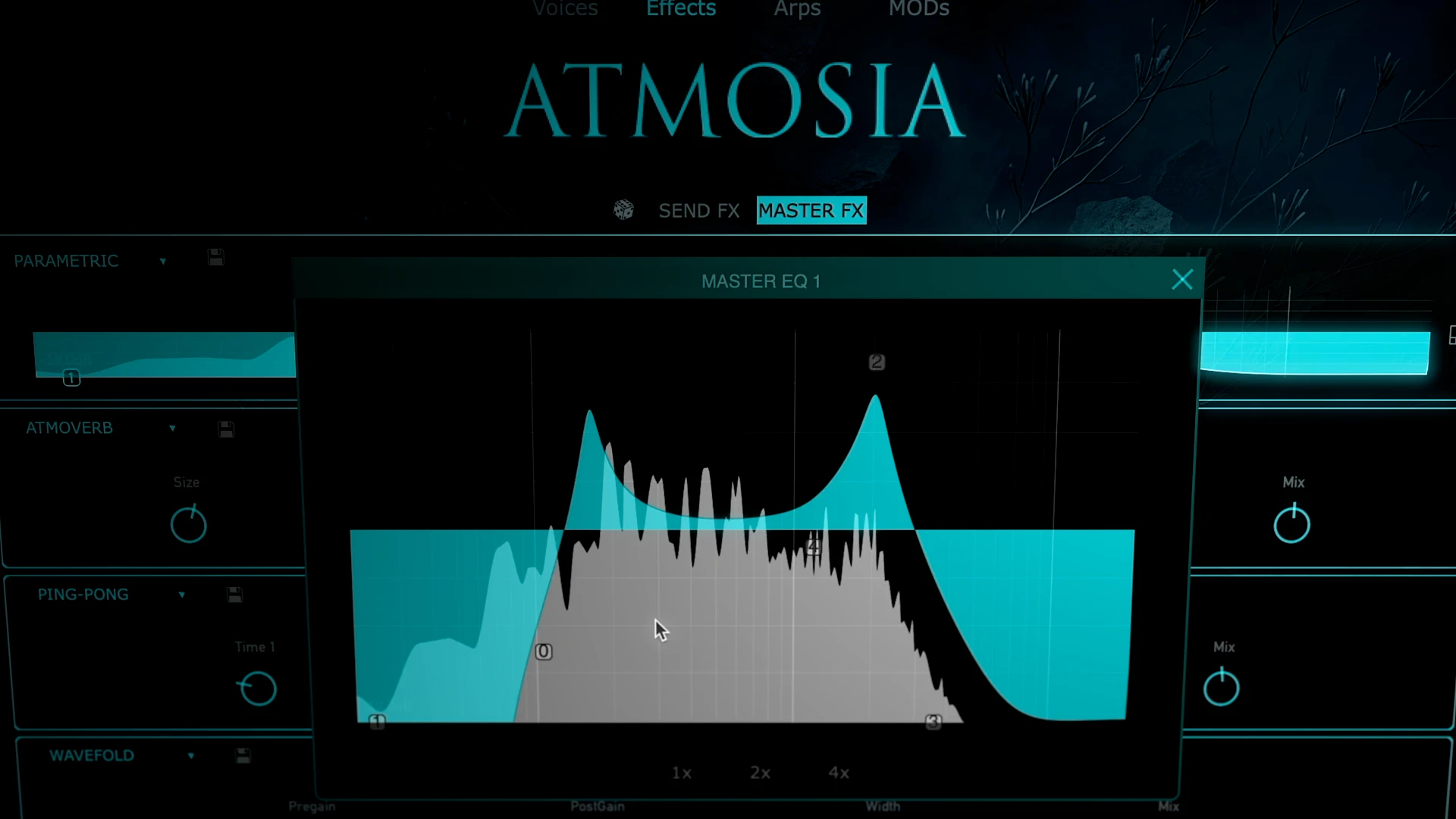
FX Engine Unleashed
We've taken Atmosia's effects arsenal from a modest 8 all the way up to 28, including a suite of custom-built modules that twist, warp, and contort your sound in delightfully unpredictable ways. Every send and master bus is now a playground—each of the four send slots and four master slots can host any of these 28 effects.
Alongside this massive expansion, we've added a brand-new ring-modulation filter that injects metallic sheen and rhythmic complexity into your patches. Whether you're dialing in subtle textures or full-on audio mayhem, Atmosia's FX engine gives you the tools to reshape your sound like never before.
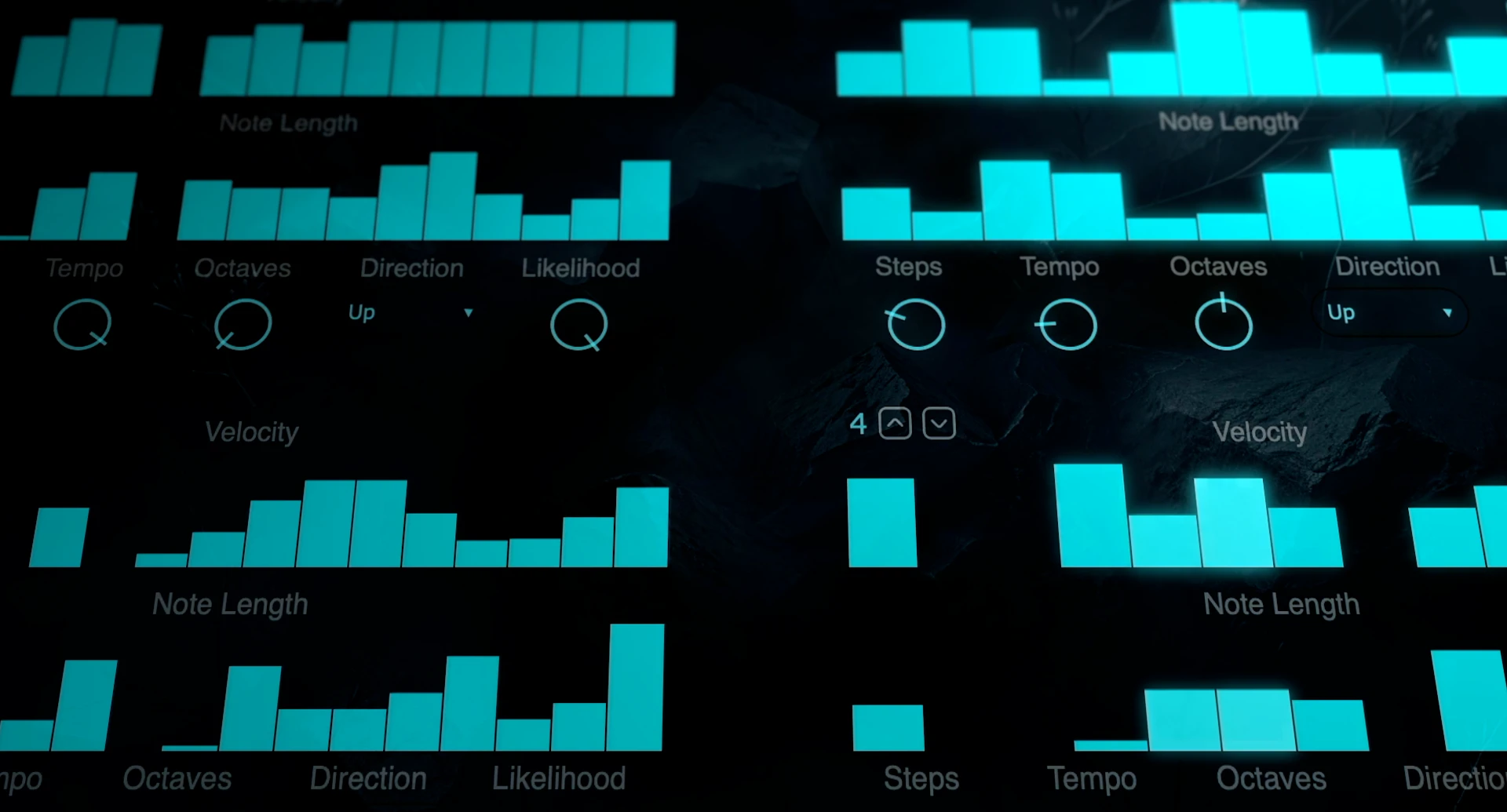
Arpeggiation Unleashed and Modulation Multiplied
Atmosia's per-voice arpeggiators just got a major upgrade. You can now choose from multiple play directions, switch into chord-based playback, and dial in a note-trigger probability to sprinkle randomness into every cycle. Whether you want tight, looping patterns or unpredictable rhythmic bursts, your arps adapt to your musical vision.
The real game-changer is how we've doubled down on modulation. Each core parameter—volume, pan, pitch, filter frequency, and resonance—now has its own dedicated LFO. And those LFOs don't live in isolation: they can have their speed modulated by secondary sources, creating layers of meta-modulation that evolve over time. On top of that, six freely assignable Mod LFOs give you unlimited routing possibilities, even allowing LFOs to modulate other LFO controls for sonic textures you've never heard before.
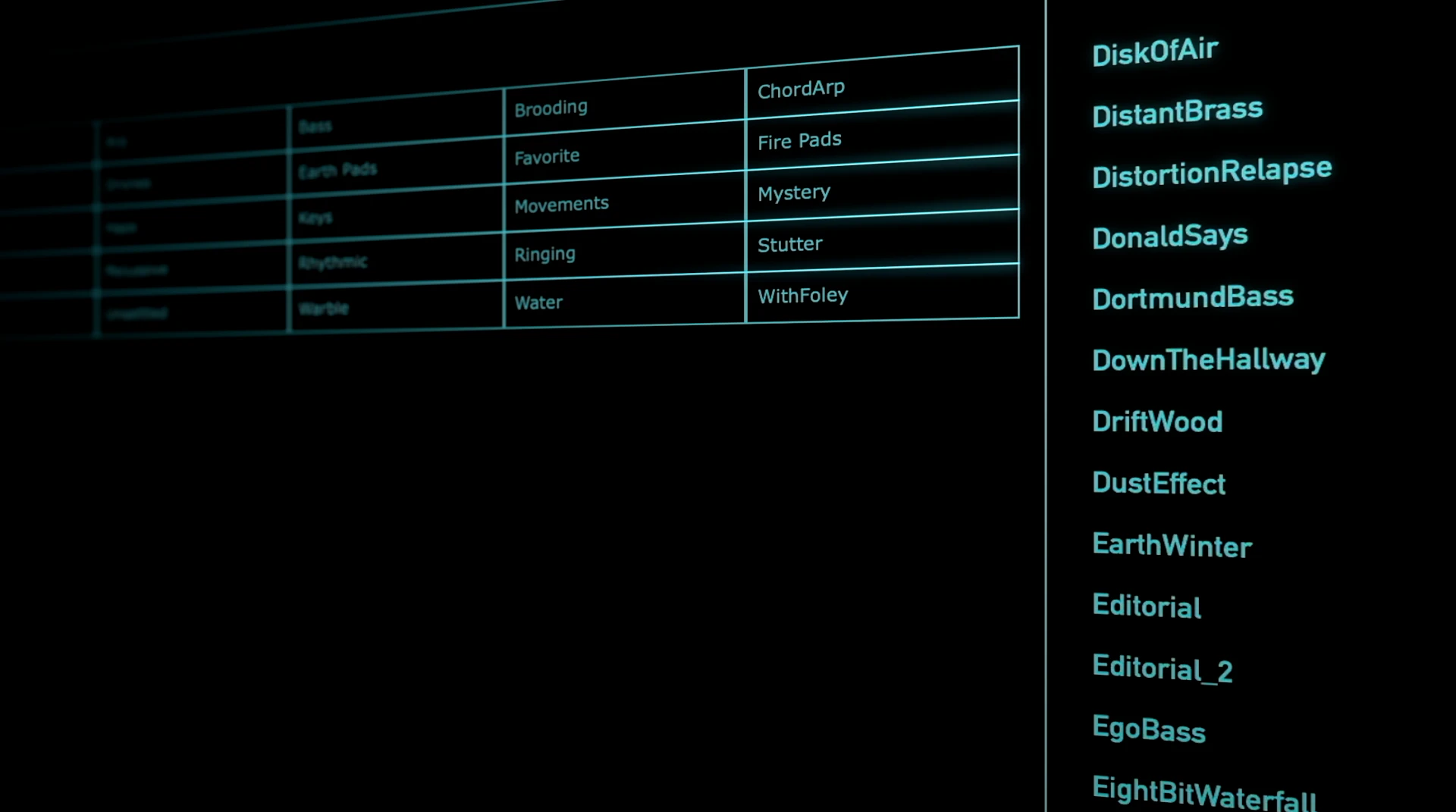
Tag Land: Next-Gen Sound Browsing and Preset Management
Experience lightning-fast sound discovery with Atmosia's completely redesigned tag-based browser. Filters and categories still let you hone in on the perfect sound sources in seconds, but now you have full control over your tagging ecosystem—create custom tags, tweak existing ones, and shape your library exactly how you work.
Loading and auditioning sounds is effortless: select any sample for one of the four voices directly from the browser and instantly hear how they interact. No menus, no hunting—just creative flow.
We've taken that same intuitive browser architecture and supercharged the preset system. Sort and search through over 330 expertly crafted presets with the same tagging precision, so you can jump to inspiring sounds or build your own signature setups with ease.
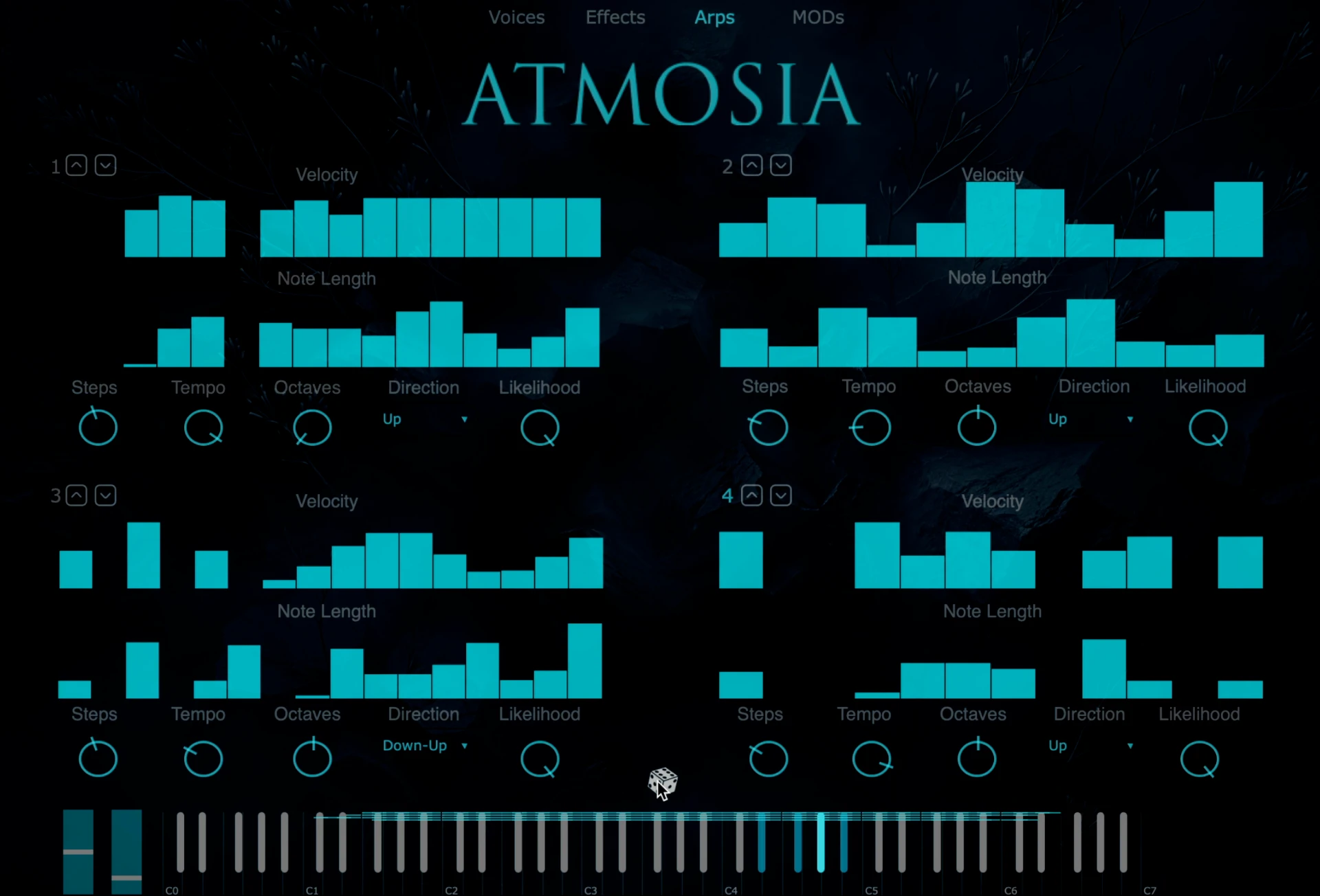
Random Worlds: Infinite Sonic Discovery
Atmosia retains its randomisation system but applies it to more effective grouping of controls, so there are independent randomisation options for Voice & Filter, Envelopes, Sends, Effects and Arps allowing you to explore thousands of options and tailor your sound design to your needs. Dial in chaos exactly where you want it and maintain control elsewhere.
Unlock thousands of unique patch variations with a single click, from subtle textural shifts to full-blown sonic mayhem.
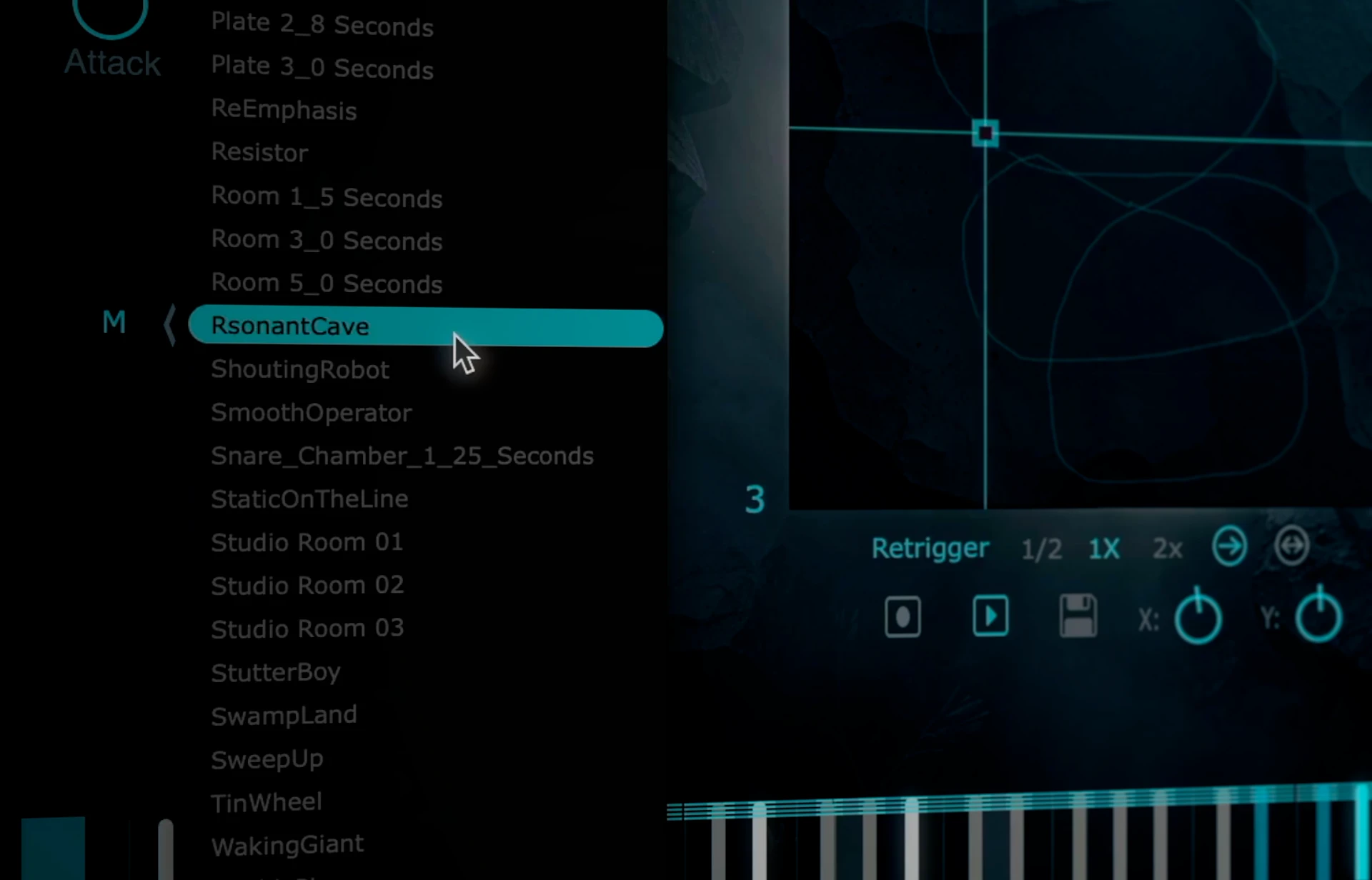
Keeping Favourites
Two favourite features have been polished to perfection. The per-voice Drone engine gives you static or MIDI-responsive drones that breathe with your performance, while the Field effect delivers convolution-powered depth using over 50 custom impulse responses.
Atmosia's Drone engine adapts to your workflow—lock in an ambient bed of sound or have each voice trail your MIDI notes for evolving, dynamic textures. The Field effect sits on every voice as a convolution processor, applying bespoke IRs that range from subtle room ambiences to radically warped spaces.
About the Developer
Lindon Mulcahy-Parker owns and runs Channel Robot, an audio development company he started in the 1990s, and that has a reputation for delivering unique perspectives on audio instruments. Lindon is responsible for the design and coding of all Channel Robot products. Since founding the company he has been developing virtual instruments and effects both for Channel Robot and for a wide range of third-party clients. He started out as a guitarist and record producer before transitioning into real-time application development for the audio and telecommunications industries. He now spends his time extending and developing functionality in the core audio and effects engines used in Channel Robot products.

Training resources
Learning Guides
Video tutorials
System requirements
-
 macOS 10.13 or Later
macOS 10.13 or Later
64-bit Apple Silicon
AU / VST3 -
 Windows 10, 11
Windows 10, 11
64-bit
VST3